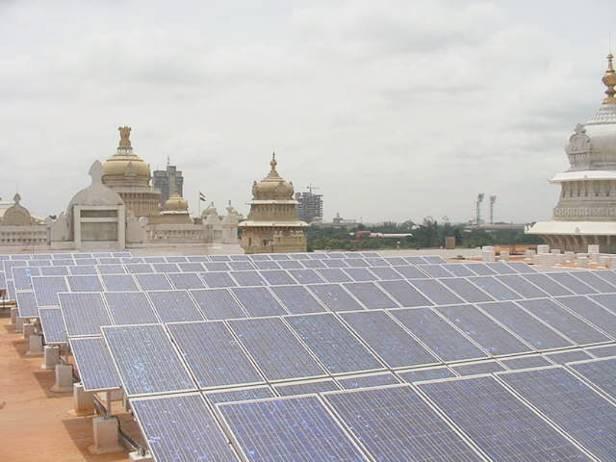India’s raft of ambitious plans and policies to ramp up national solar development have been generating plenty of headlines over the past few months, and new data has suggested tthe best-case scenario for India’s solar sector could boost the sub-continent’s PV capacity by more than 140GW over the next decade
“The realizable potential for solar power generation in India is between 110GW to 145GW across (all four) different types of systems,” said Bridge to India founder and director Tobias Engelmeier. “The four scenarios together could easily create over 675,000 solar jobs in India in the next 10 years.
“But the real issue, is to choose the best way for India to go solar that entails a fair choice between millions of small systems (“bees”) on one end of a spectrum, and a few very large systems (“elephants”) on the other; the former creating a consumer market and the latter an infrastructure market,” Engelmeier said.
According to PV Magazine, the analysts compared each scenario in terms of landed cost of power (LCOP) – the cost to the consumer at the point of consumption – and levelised cost of energy (LCOE).
While LCOE is the more traditional gauge of renewables generation costs, analysts at Bridge to India and Tata argue that LCOP, which can be as much as 30 per cent higher than LCOE, should become the new economic metric for measuring India’s solar potential.
The report calculates that the LCOE for ultra-mega plants in India is 6.6 rupees per kWh ($US0.10c/kWh), with LCOP at 8.4R/kWh ($US0.14c) – already comparable to imported coal (Bloomberg New Energy Finance has predicted that solar PV in India will best both gas and coal on costs by 2020). And with the price of coal expected to increase, the other three scenarios would also be expected to reach parity during that time.
This graph below – from a concurrent report by Deutsche Bank – shows how the levellised cost of solar in India (and China) is cheaper than in oner countries. And it shows how India’s solar capacity has jumped from basically nothing in the last few years. Its previous National Solar Mission target was for 22GW by 2020 – less than one sixth of what is now thought possible.

Longer-term, the Tata Power report suggests that large rooftop solar systems – the pigeons – will prove the cheapest option, achieving an LCOE of $US0.10/kWh and an LCOP of just $US0.11/kWh by 2024.
The “solar bees” approach – with a focus on small rooftop projects – is shown by the report to have the best outcome for India’s economy, offering the potential to add 325,000 jobs and 25GW of PV capacity.
“Solar is unique in its limitless potential for power generation – from distributed to centralized generation, and residential kW to GW-scale solar plants, the permutations are endless,” said Tata Power Solar CEO Ajay Goel. “To solarize our economy, it is important to find the right mixture of pathways that will have both economic as well as social impact.”









